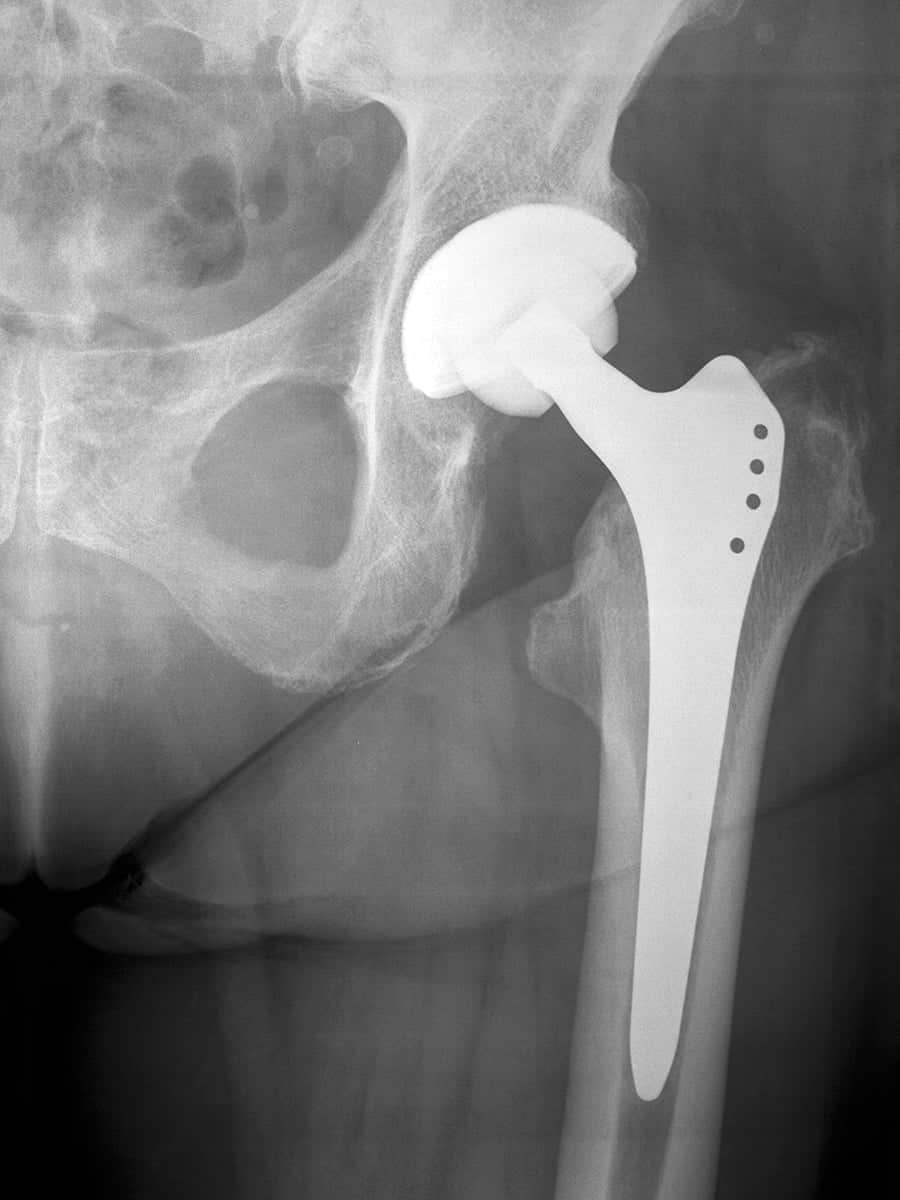Introduction
A hip replacement procedure (also known as a 'total hip replacement' or 'hip arthroplasty') may be an option for people with severe hip arthritis. It may also be an option for people who have suffered major trauma, for example in a vehicle accident, or who have fractured one of more bones in the pelvis, or who due to other medical factors (e.g. vascular necrosis) have some degeneration of the hip.
The procedure involves the removal of all damaged and diseased bone, cartilage and tissue from the affected section of the hip and the insertion of a new artificial hip in its place. The new hip has two components – an 'acetabular prosthesis' which is the component that replaces the original socket joint in the hip bone (the 'acetabulum') and a 'femoral prosthesis' which replaces the ball component of the thigh bone (called the 'femoral head').

Preoperative Instructions
- Existing medication(s) – some medications can impact surgery, especially any anti-coagulant medication and medicine for diabetes; we will advise if any of your medication needs to be stopped (and when) well ahead of the day of surgery. Any other medication should be taken the morning of surgery with a little water (half a cup maximum).
- You should not shave (or wax) skin near where any surgical incisions will be made.
- No solid foods (cow's milk and drinks containing cow's milk are considered food) should be consumed within 6 hours of surgery; clear fluids (e.g. water, cordial) may be consumed until 3 hours before surgery and then nil by mouth from that point.
- Please advise us if you have a cold or fever, a cough or any other injuries or infections (e.g. urinary tract infection or cuts/tears to the skin) – your procedure may need to be postponed as any of these may make anaesthesia or surgery unsafe.
- Please bring all imaging (e.g. x-rays / CT scans / MRI scans) with you to hospital.
- Please come to hospital at least one hour before your planned surgery, unless we advise you otherwise.
In very general terms make sure you follow a healthy and balanced diet before surgery and continue any regular physical activity up until the day of the procedure. If you smoke, you should ideally stop smoking at least four weeks before the procedure and otherwise as a minimum at least one week before.
Procedure
A hip replacement procedure is conducted under a general anaesthetic (although it can also be conducted using a regional block anaesthetic or spinal epidural where the patient stays awake throughout) and generally takes 2-3 hours to complete.
Generally, the patient lies on one side and is braced into position to ensure the hip remains in position for the duration of the surgery. An incision is then made to the side of the hip and muscles and other soft tissue under the skin is moved to one side to allow access to the hip joint.
The femoral head (the ball) is then cut away, which exposes the acetabulum (the socket) which can then be prepared for the acetabular prosthesis to be fitted in place, replacing the original socket. A synthetic lining (made either of polyethylene – a type of medical grade plastic, or ceramic or metal) is then fixed into the prosthesis – this replicates the function of cartilage in the joint, allowing the ball and socket to move smoothly together.
Once the new socket has fitted, the top of the femur is made ready for the femoral prosthesis to be fitted – this prosthesis has a long stem which is inserted into the top of the femur.
Whether bone cement is used to fix the prostheses in place depends on the condition of the bone – if the underlying bone is sufficiently strong and of good quality, the prostheses can be fitted without cement and the existing bone will regrow and bond with the artificial components to make a strong joint.
Once both components are in place the new joint will be tested to ensure that it functions properly (i.e. has a full range of motion) and that the patient's legs closely match each other in terms of length. Any necessary adjustments are made at this point and then the muscle and soft tissue is moved back into place and the incision is closed.
Postoperative instructions
After the procedure the patient will need to stay in hospital for a few days, with the hip largely immobilised in a splint. Standing up and walking a short distance on the day after surgery is strongly encouraged and a rehabilitation exercise program is put together to aid in recovery (more details on this rehabilitation program are given to all patients after surgery).
Day-to-day activity can normally be resumed 3-6 weeks after hip replacement surgery. The replacement hip will allow the resumption of low impact sports (e.g.: walking, bowls, golf) and some versions of more physical sports – doubles tennis for example but not singles, and 'gentle' skiing are OK. Contact sports and any sports involving running are not recommended after a hip replacement.
Risks
As with any surgery, with hip replacement surgery there is always a risk of:
- Pain.
- Bleeding.
- Scarring.
- Infection (of the incision site, or in the chest).
- Blood clot (leg or lung).
- Stroke.
- Heart attack.
- Damage to nerves / blood vessels.
Specific risks of hip replacement surgery include:
- Artificial components of the hip may wear out or become loose over time (due to 'wear and tear' or in some cases a condition known as osteolysis).
- Hip dislocation.
- Leg length discrepancy (some leg length discrepancy – around 1cm – helps to avoid dislocation).
After a hip replacement some patients have the sensation that their legs are different lengths – this can be caused by normal muscle contraction which goes away over time as the muscles become accustomed to the new joint.

